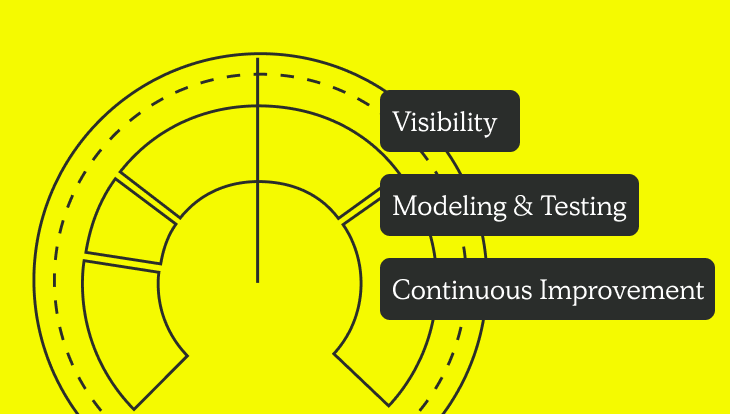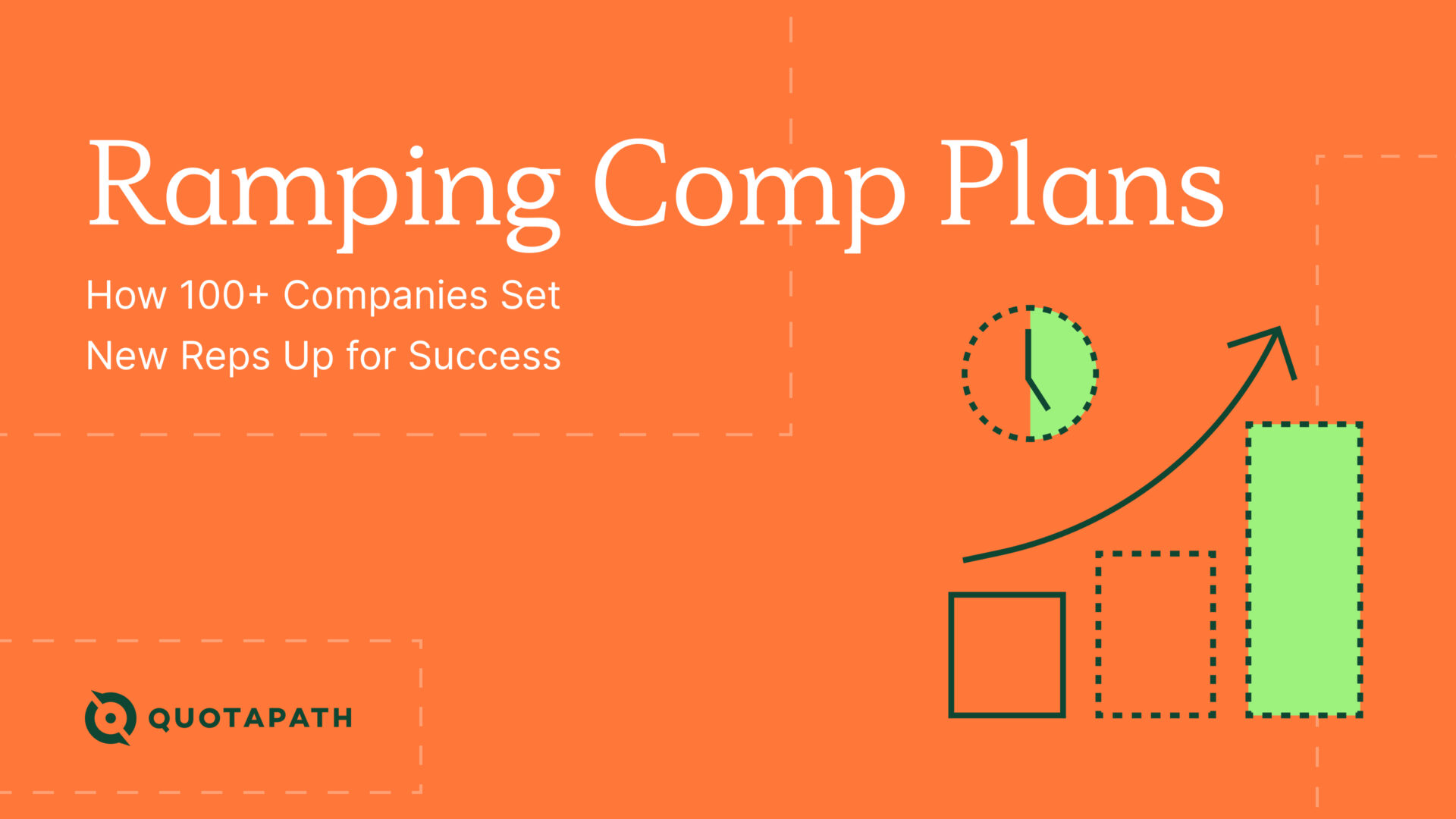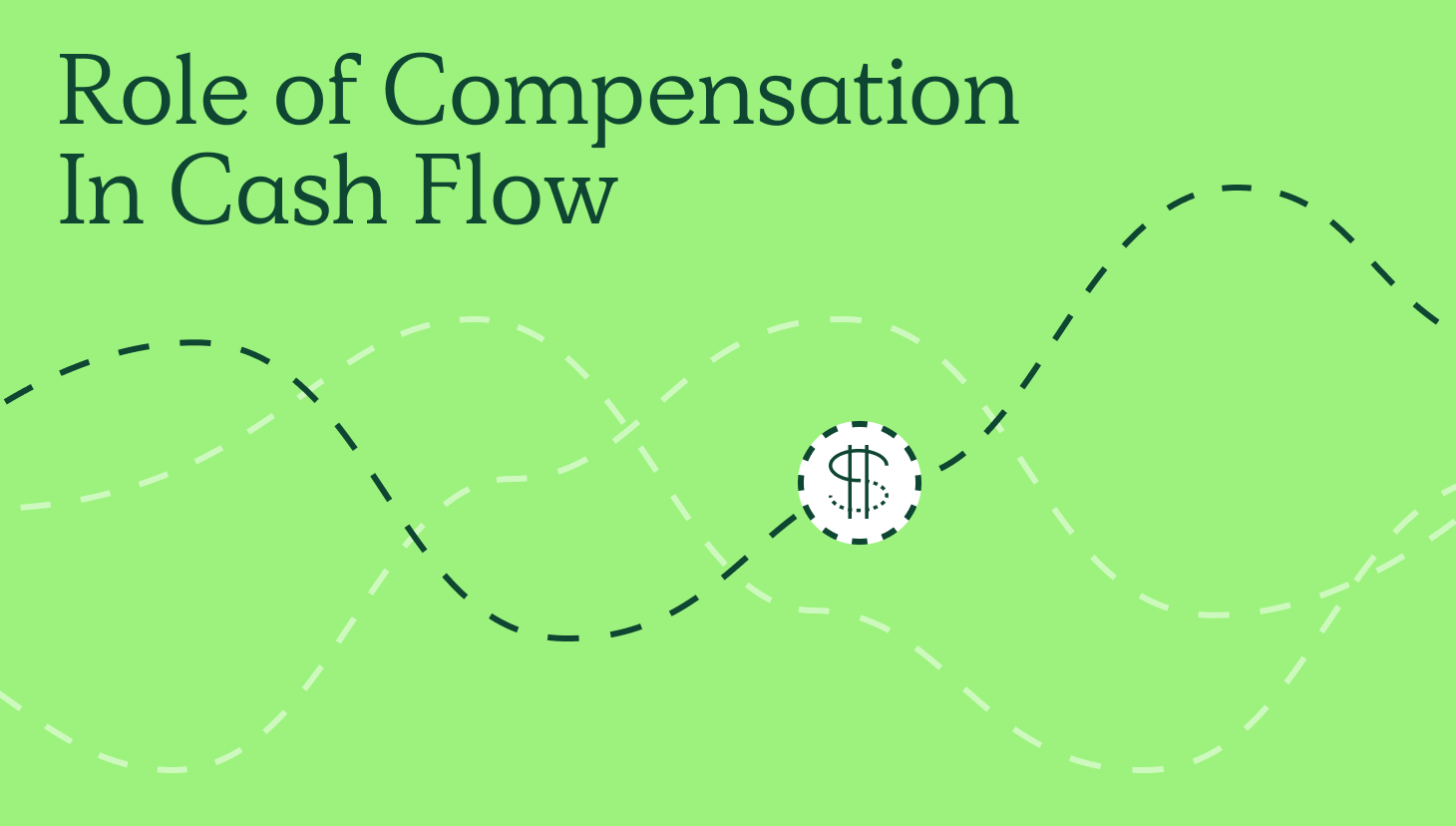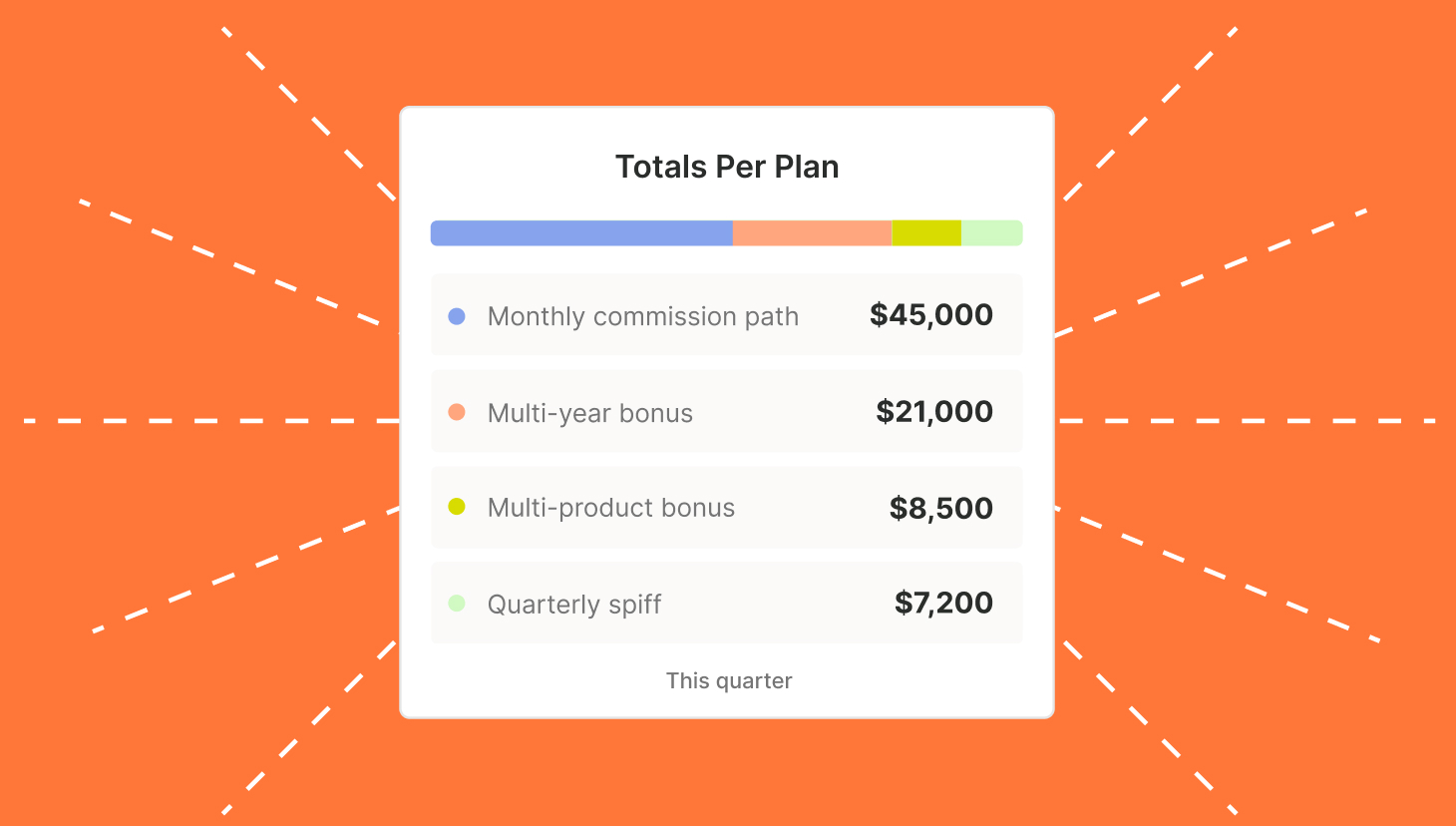A recent study found that of 450 revenue leaders surveyed, 14% reported that their sales compensation plans fail to drive customer acquisition costs (CAC). Another 10% noted that their comp structures are too easily obtained.
Both challenges represent the side effects of a non-optimized compensation plan, which can lead to a cascade of negative consequences.
Streamline commissions for your RevOps, Finance, and Sales teams
Design, track, and manage variable incentives with QuotaPath. Give your RevOps, finance, and sales teams transparency into sales compensation.
Talk to SalesAdditional downsides from a failure to focus on compensation plan optimization include:
- Low Employee Morale and Motivation: Unfair or unclear compensation structures can demotivate employees. If reps feel they can’t reach their targets or that their efforts aren’t rewarded fairly, it can lead to decreased engagement and productivity.
- High Turnover: Disgruntled employees are more likely to leave for companies with more attractive compensation packages filled with sales performance drivers. This can be costly for businesses, as recruiting and training new hires takes time and resources.
- Focus on Short-Term Gains: A poorly designed comp plan might incentivize short-term, unsustainable behaviors. For example, reps prioritize quick sales over building long-term customer relationships.
- Alignment Issues: If the compensation plan doesn’t align with your overall business goals, it can lead to a misalignment of priorities. For instance, a plan emphasizing pure sales volume might not encourage reps to sell higher-margin products or provide excellent customer service.
- Administrative Headaches: Complex or poorly designed comp plans can be a nightmare for HR and payroll departments to administer, leading to errors and delays in payouts.
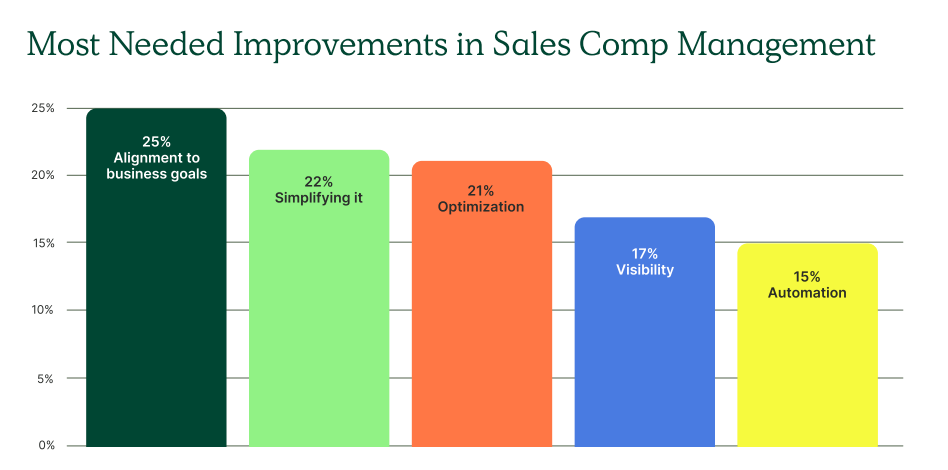
By optimizing your compensation plan, you can address these issues and create a system that incentivizes the behaviors that drive long-term success.
This blog examines success-proven tools and methodologies that foster revenue and finance alignment, drive sales team engagement and performance, and maintain compensation plan simplicity.
Introduction to Compensation Plan Optimization
We’ll start with an introduction to compensation plan optimization.
Imagine a sales compensation plan that:
- Drives down customer acquisition costs (CAC), ensuring you acquire new customers profitably.
- Presents clear goals and rewards that are attainable, motivating for your sales team, and profitable for your button line.
- Aligns perfectly with your overall business objectives, incentivizing behaviors that drive the results of your key targets.
That sounds pretty good, right? Unfortunately, many companies struggle with non-optimized compensation plans, leading to the abovementioned issues.
This guide dives into the world of compensation plan optimization. We’ll explore success-proven tools and methodologies that can help you achieve the dream scenario outlined above. You’ll learn how to foster revenue and finance alignment, maximize sales team engagement and performance, and maintain compensation structure visibility.
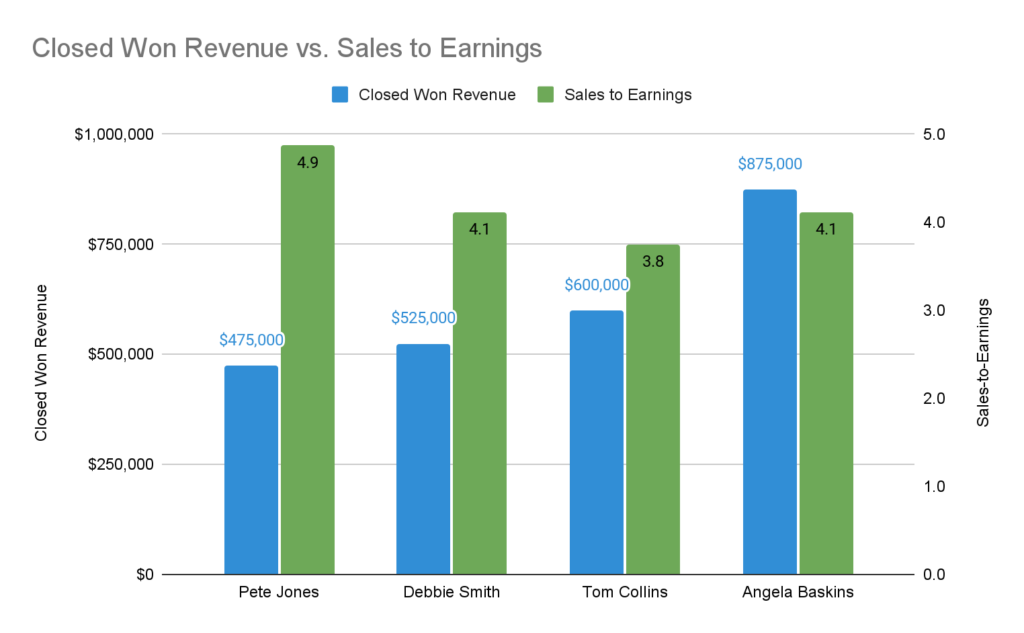
Gaining Visibility Into Your Compensation Structure
To optimize your compensation models, start by introducing a process or tool like QuotaPath that gives you and your revenue organization visibility into how commissions are tracked, calculated, and paid.
Compensation plan automation and commission tracking software provide a clear window into your entire compensation structure. This newfound visibility empowers you to:
- Identify Inefficiencies: Unearth areas where your current plan might be overly complex or have unintended consequences.
- Look up total effective commission rates per deal to see if you’re overpaying commissions across the collective roles tied to a deal without manipulating a spreadsheet
- Easily lookup large commission rate payouts to see if it’s a problem with your comp plan or that the rep earned an accelerated rate due to plan rules
- Check the efficiencies and inefficiencies of sales reps to measure your most profitable reps by evaluating Sales: Earning ratios
- Run Simulations: Test different compensation scenarios before rolling them out to your team. This allows you to identify potential issues and fine-tune the plan for optimal impact.
- “Pressure test a few things,” said Stage 2 Investor and GTM Advisor Liz Christo. “Most models have broad-based assumptions. But what if every rep hits quota? What if every rep hits 120% of quota? Will we all be super excited about this, or will we see that this math doesn’t work when the accelerators kick in?”
- Account for outliers and estimate total compensation costs at various team-wide performance levels.
- Learn more about QuotaPath’s plan performance modeling in-app.
- Foster Transparency: A clear view into the compensation structure builds trust with your sales reps. They can see exactly how their performance translates to rewards, keeping them motivated and engaged.
- Our 2024 survey found that it takes reps 3 to 6 months to understand how they earn commissions. This is due to overly complex plans, lack of access to their comp plans and progress, and poor communication and plan rollout from leadership.
By gaining visibility, you lay the groundwork for a data-driven approach to compensation plan optimization. The next section will explore the power of modeling and testing different plan variations.

Modeling and Testing Plan Performance
When it comes to modeling and testing compensation plan performance, we’ve found that many leaders will run models using last year’s data to see what they would pay this year.
“But they’re doing this from the core plan and not layering in SPIFs,” said QuotaPath VP of RevOps Ryan Milligan. “If I SPIF Everyone on my team, and my close rates go up, and the outbound pipeline grows by 40%, then what?”
QuotaPath can effectively model these scenarios so that you can go to your board and show your reps’ performance and the dollars in and out the door.
“It allows you to see if you’d be happy to pay these commissions based on what’s coming in and team attainment,” Ryan said.
Plus, modeling and testing are essential tools for RevOps and finance leaders who want to ensure their compensation plans drive the desired sales outcomes while remaining cost-effective and aligned with the business strategy.
Benefits of Plan Modeling
-
- Reduces Risk of Costly Mistakes: Compensation plans are a significant investment. A poorly designed plan can lead to overpaying reps, under-motivating the team, or even driving misaligned behaviors. Modeling allows you to simulate different scenarios and identify potential issues before they impact your bottom line.
-
- Improves Plan Effectiveness: Testing allows you to fine-tune your plan for maximum impact. You can see how changes to commission rates, quotas, or bonus structures affect sales rep behavior and overall revenue generation while running SPIFs and accelerator testing.
-
- Informs Data-Driven Decision Making: Stop relying on gut instinct. Modeling provides hard data to support your decisions about compensation plan design. This data can be used to justify changes to stakeholders and build consensus around the new plan.
-
- Enhances Agility: The business landscape is constantly evolving. Regularly testing your comp plan ensures it remains relevant and effective in a changing market. This allows you to adapt quickly to new sales channels, product offerings, or competitor strategies.
-
- Boosts Sales Rep Morale: A well-tested plan that rewards the right behaviors builds trust and transparency with your sales team. Reps understand how their performance translates to commissions, which can lead to increased motivation and engagement.
- Reduces Risk of Costly Mistakes: Compensation plans are a significant investment. A poorly designed plan can lead to overpaying reps, under-motivating the team, or even driving misaligned behaviors. Modeling allows you to simulate different scenarios and identify potential issues before they impact your bottom line.
Customizing Compensation Plans By Role
Another way to optimize your compensation plan is by customizing compensation plans according to role.
For instance, you wouldn’t offer variable pay to a customer experience (CX) rep that only focuses on upsells. Doing so suggests that you want your CX team focused only on selling the customer more versus delivering value so that they renew and grow their account.
Different sales roles have unique objectives, challenges, and responsibilities. Consider customizing your compensation plan by role to motivate and reward your team.
Create Compensation Plans with confidence
RevOps, sales leaders, and finance teams use our free tool to ensure reps’ on-target earnings and quotas line up with industry standards. Customize plans with accelerators, bonuses, and more, by adjusting 9 variables.
Build a Comp PlanHere’s how:
Identify Key Performance Indicators (KPIs): Not all salespeople are created equal. For example, an Account Executive (AE) might focus on closing new deals, while a Customer Success Manager (CSM) prioritizes customer retention and upsells. Define the specific KPIs that matter most for each sales role.
Align Incentives with Objectives: Once you’ve identified key metrics, tailor the compensation plan to incentivize the behaviors that drive success in each role. For instance, AE’s plan might emphasize commissions tied to new customer acquisition, while CSM could reward upsells and renewals.
Account for Experience Level: Junior reps might require a higher base salary with a lower commission structure, while seasoned veterans might thrive on a performance-heavy commission plan. Consider experience level when designing compensation packages.
Address Regional Variations: Cost of living and market dynamics can differ significantly across regions. Factor these variations into your compensation plans to ensure fairness and competitiveness in attracting and retaining top talent across your geographical footprint.
Doing so should increase motivation because you’re tailoring their pay structure specific to their job function, improving alignment toward the right objectives, and fostering both customer and employee retention.
By customizing flexible compensation plans by role, you can create a system that motivates your team, aligns with your business goals, and fuels long-term sales success. The next section will explore the power of forecasting and experimentation in compensation plan optimization.
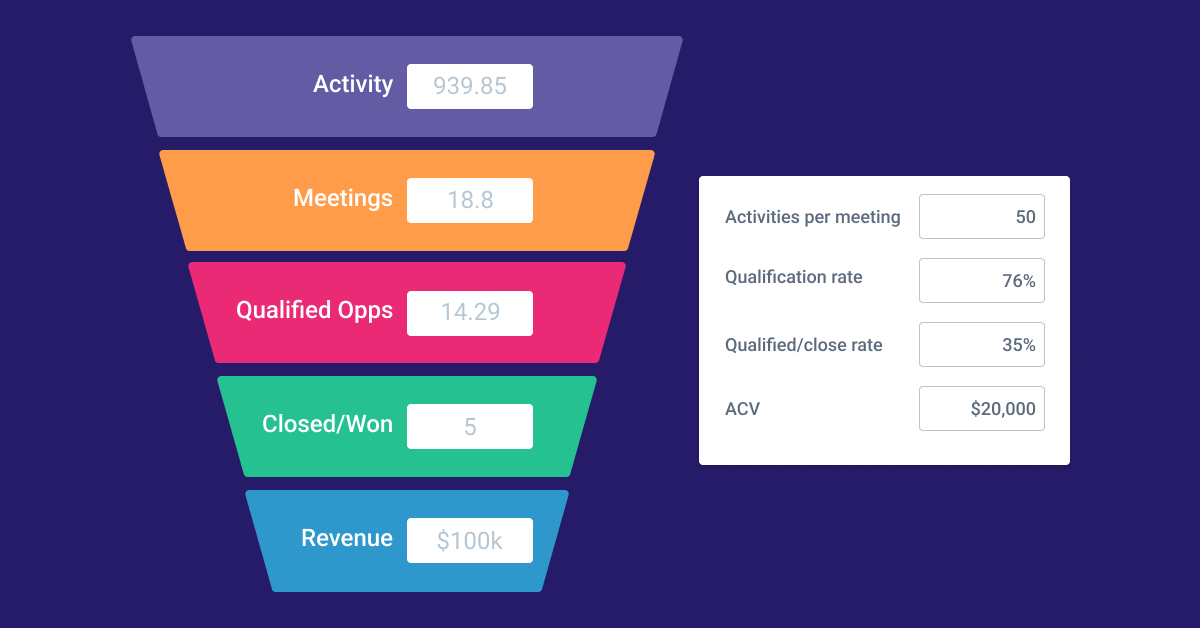
Build a Sales Funnel
Use our free sales funnel resource to see how many meetings your team needs to book to hit quota.
Calculate NowForecasting and Experimenting
Compensation plans are not static documents.
They should be living, breathing entities that evolve alongside your business strategy and market conditions.
This is where forecasting and experimentation come into play:
Forecasting Future Needs
Predicting Revenue Growth: You can forecast future revenue growth by analyzing historical sales data and market trends. This allows you to tailor your compensation plan to incentivize behaviors that will drive the desired revenue outcomes.
Proactive Pipeline Management: You should design compensation plans to keep your sales pipeline healthy, such as incentivizing outbound deals. Forecasting can help you anticipate future pipeline needs and adjust your plan accordingly.
- For example, if you foresee a dip in new opportunities, you might temporarily increase commissions for closing existing deals.
Budget Planning & Cost Management: Forecasting future compensation costs allows you to effectively budget for payroll and ensure your plan remains financially sustainable.
Experimentation for Continuous Improvement
A/B Testing Different Structures: Don’t be afraid to experiment with different compensation models. A/B testing allows you to compare the effectiveness of various plan structures on a small scale before rolling them out to the entire team. This data-driven approach helps you identify the optimal plan for driving sales performance. You could also implement a SPIF for a period of time to test to see if it should be a long-term fixture in your comp plan.
Adapting to Market Changes: The sales landscape is constantly evolving. By regularly testing and iterating on your compensation plan, you can ensure it remains relevant and effective in a changing market. For example, you might need to adjust commission rates or quotas based on new competitor offerings or customer buying behaviors.
Optimizing for Long-Term Success: Through continuous forecasting and experimentation, you can refine your compensation plan to drive long-term sales growth and achieve your overall business objectives.
By embracing a dynamic approach incorporating forecasting and experimentation, you can transform your compensation plan from a static document into a powerful tool that continuously adapts to fuel long-term sales success.

How To Ensure Your Team Understands Their Comp Plan
The more reps understand how they are compensated, the more likely they are to be incentivized by your plan.
Read BlogMaintaining Clear Compensation Expectations
A well-designed compensation plan is only effective if everyone understands it. Unclear expectations can lead to confusion, frustration, and ultimately, a demotivated sales team.
Here are five best practices to ensure clear compensation expectations throughout your organization:
| Transparency is Key | Ensure your compensation plan is clearly documented and easily accessible to all salespeople. This includes details on quotas, commission rates, bonus structures, and other relevant information. |
| Regular Communication | Don’t just present the plan once and forget it. Regularly communicate with your team about their compensation and how their performance translates to rewards. Hold individual and team meetings to address questions and ensure everyone is on the same page. |
| Utilize Technology | Consider using compensation management software to provide real-time visibility into earnings. This allows reps to track their progress toward goals and see the direct impact of their efforts on their compensation. |
Scenario Modeling | Run simulations with your sales team to demonstrate how different behaviors and performance levels translate to compensation. This helps reps understand the “what-ifs” and how their actions directly affect their earnings. |
| Open Feedback Channels | Encourage open communication about compensation. Create a safe space for reps to ask questions and voice concerns. By addressing issues proactively, you can avoid misunderstandings and ensure everyone feels fairly compensated. |
| Scenario Modeling | Run simulations with your sales team to demonstrate how different behaviors and performance levels translate to compensation. This helps reps understand the “what-ifs” and how their actions directly affect their earnings. |
| Open Feedback Channels | Encourage open communication about compensation. Create a safe space for reps to ask questions and voice concerns. By addressing issues proactively, you can avoid misunderstandings and ensure everyone feels fairly compensated. |
By following these best practices, you can maintain clear compensation expectations and create a more engaged and motivated sales team. A well-understood compensation plan fosters trust and transparency, leading to a more successful sales organization.
Try QuotaPath for free
Try the most collaborative solution to manage, track and payout variable compensation. Calculate commissions and pay your team accurately, and on time.
Start TrialSuccess Story: Everview’s Record Sales With QuotaPath
Looking for a real-world example of how compensation plan optimization can drive sales success?
Look no further than EverView’s impressive results after implementing QuotaPath.
EverView wasn’t just tinkering around the edges – they achieved record sales in just 3 months with QuotaPath.
This dramatic improvement can be attributed to several key factors:
- Transparency and Trust: QuotaPath’s clear visibility features helped EverView create a culture of understanding and trust around compensation plans and commissions. No more confusion or frustration – sales reps have a clear line of sight into how their efforts translate to rewards.
- Scalability and Ease of Use: QuotaPath’s user-friendly design ensured a smooth implementation at scale. The system is easy to adopt and navigate, eliminating the complexities that can often bog down traditional compensation management processes.
- Boosting Efficiency: EverView cut their monthly commission calculation time to three hours for 80 sellers.
- High User Adoption: EverView achieved an impressive 95% team-wide daily user adoption rate for QuotaPath. This widespread engagement demonstrates the system’s value and user-friendliness for the sales team.
- Record-Breaking Performance: The impact on sales performance is undeniable. EverView achieved their highest sales year to date, with a staggering 70% of the team hitting quota. QuotaPath empowered reps to see the direct connection between their efforts and earning potential, leading to a significant boost in motivation and results.
EverView’s success story is a powerful testament to the potential of compensation plan optimization.
Leveraging QuotaPath’s visibility, ease of use, and scalability, EverView transformed its compensation plan from a potential roadblock into a powerful tool that fueled record-breaking sales performance.
To learn how QuotaPath can support your complex commission structures and make your process more efficient, schedule time with our team.
